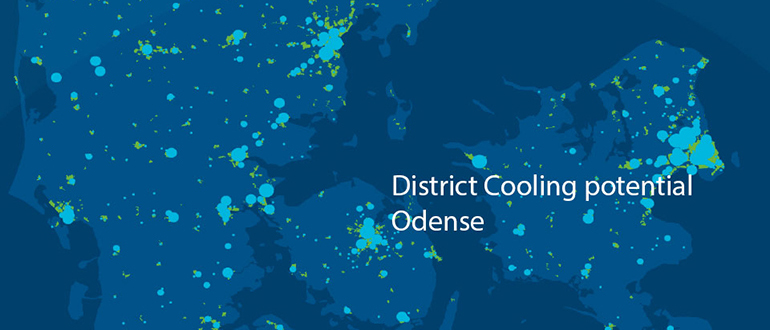Klaus Christian Jespersen and Martin Grunnow Vinstrup
Bachelor Thesis – Energy Technology - 2017
In 2016 Ramboll and Aalborg University published the report "Køleplan 2016", which indicates a technical potential of establishing district cooling in Odense. The area around IKEA is specifically mentioned. Fjernvarme Fyn are currently delivering comfort cooling to IKEA using two electrical chillers. The solution is prepared to be expanded as district cooling, if a feasible scenario arises. Fjernvarme Fyn are interested in investigating the possibility of district cooling by expanding from IKEA to Bilka, Rosengårdcentret and maybe Nyt OUH and SDU.
This project identifies the cooling potential for the mentioned companies. Hereafter the cheapest production technology mix is identified and lastly a cost-benefit-analysis is conducted for the district cooling company and the district cooling customers.
The investigation shows, that the cheapest production technology mix is by using electrical chillers in combination with Aquifer Thermal Energy Storage (ATES). Absorption chiller and adsorption chiller, which convert heat to cooling, are too expensive with a heat price of 100 DKK/MWh.
The business case for the district cooling customers and the district cooling company is feasible with a savings potential of up to 68 % in comparison with an individual cooling facilities if all the customers are to invest in new production facilities at the same time.
An obligation to connect to a district heating network does not apply as opposed to district heating. The result is an infeasible business case if the consumers are connected over time as their existing production facilities are replaced.
Collaboration partners
